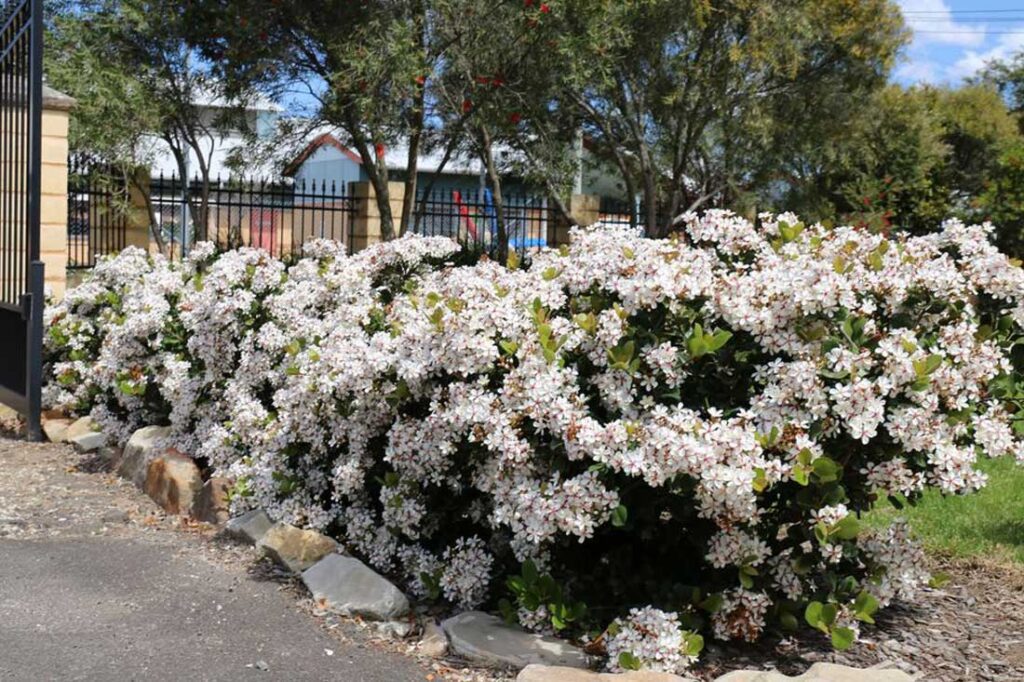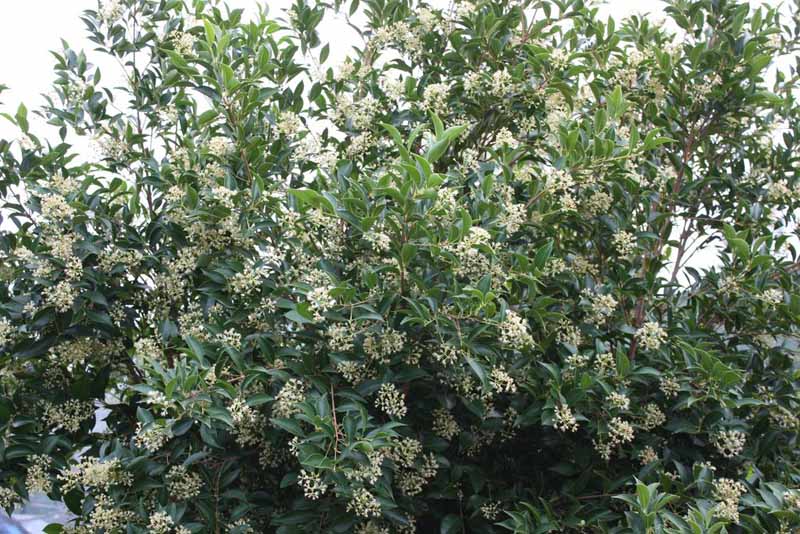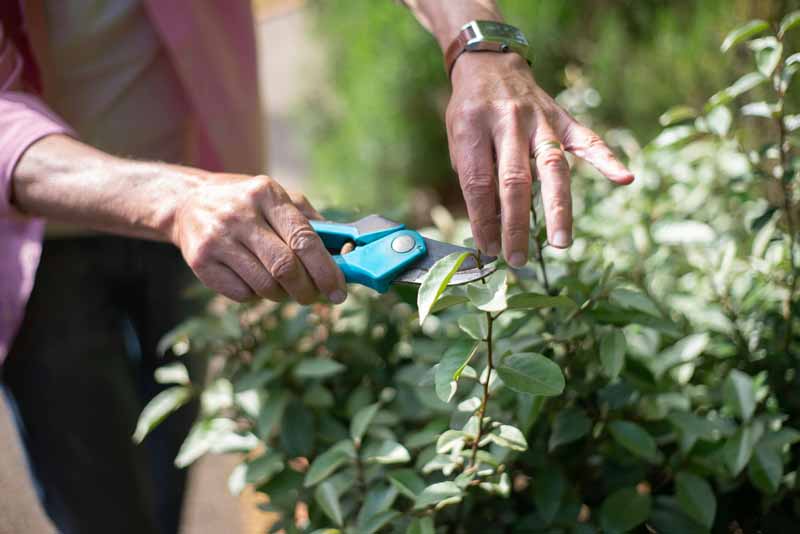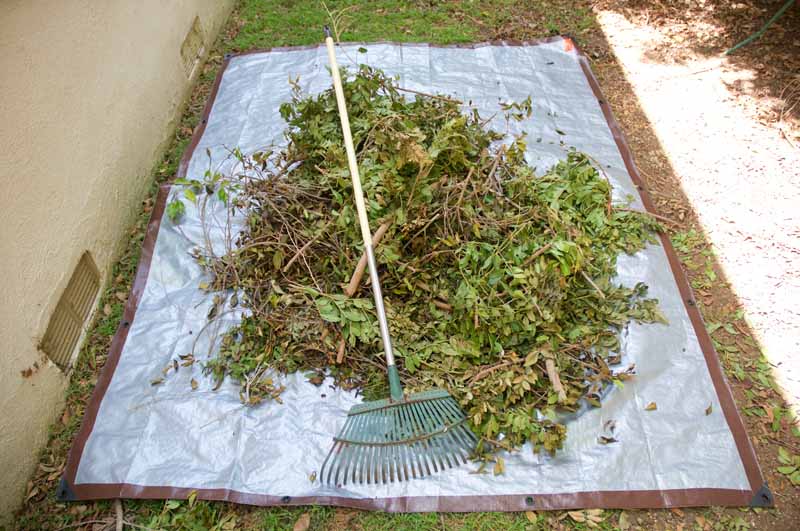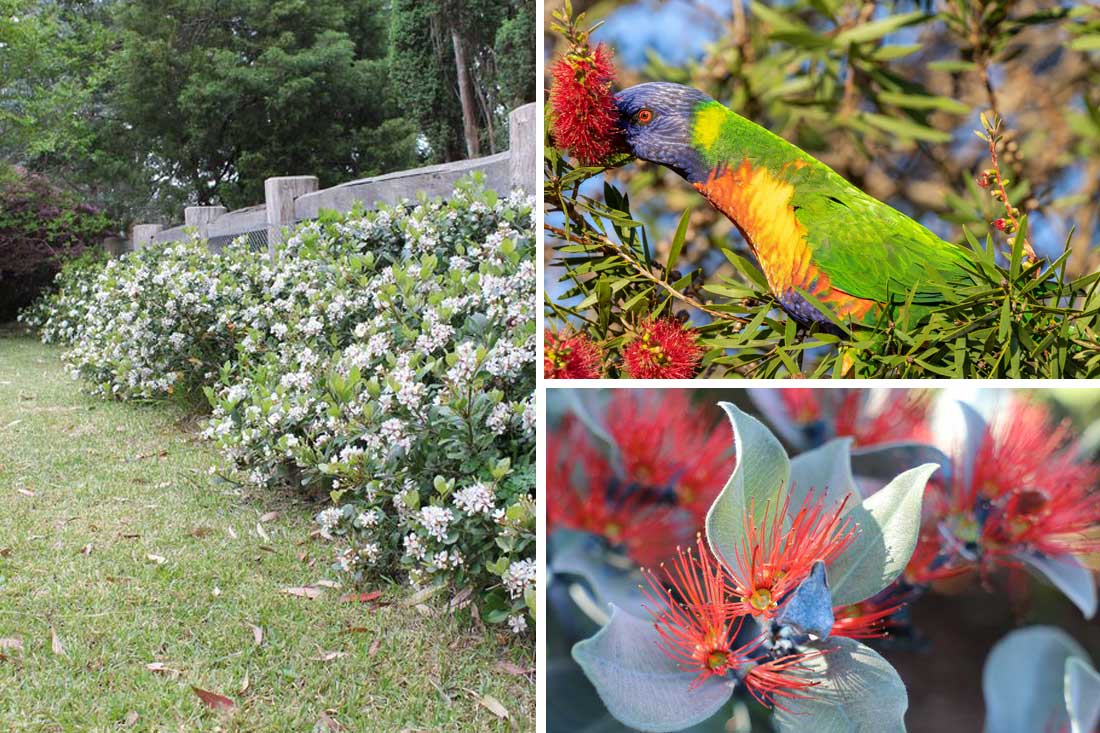Have you ever found yourself pondering whether the hedge you’re about to plant should be native or non-native? You’re not alone. The debate between choosing native and non-native plants for our gardens and landscapes is ongoing, with valid arguments on both sides.
But perhaps it’s time we shift our perspective from a binary classification to a more nuanced understanding of each plant’s individual benefits and requirements. In this article, we delve into the nuance of native versus non-native hedges, so that you’re able to make an informed decision.
This is a giant native hedge, perfect for screening and wind breaks. Sweeper® Waterhousea floribunda‘DOW20’ PBR.
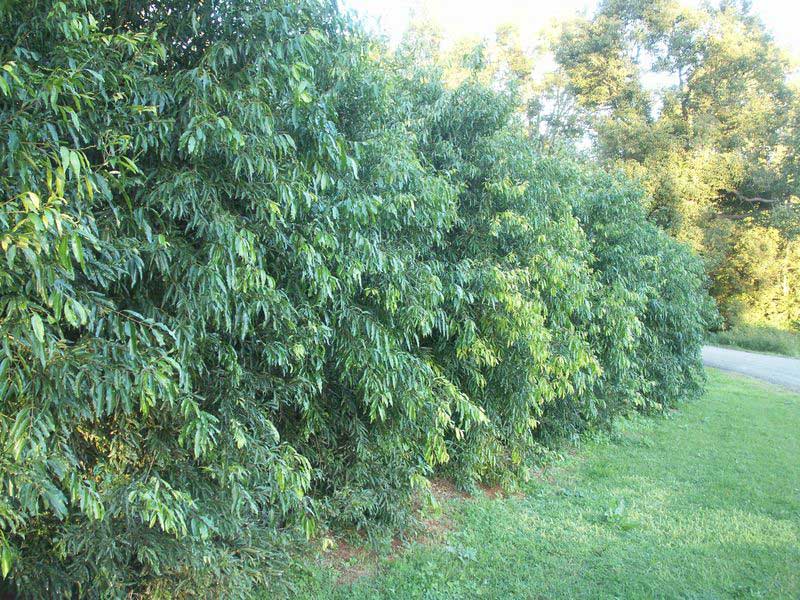
Understanding the Basics: Native, Non-Native, and Endemic
Definition of Terms
- Australian Native Plants are species that have evolved in an area of Australia over thousands or millions of years – they could be from any area and so a native plant may or may not be appropriate for your specific conditions and ecology.
- Endemic Plants are native species that occur in a particular area, often nowhere else on the planet. These plants are native to your local area, rather than just anywhere in the country.
- Non-Native (Exotic) Plants refer to species introduced to Australia where they do not naturally occur, from an overseas ecosystem. Their introduction can be intentional, for ornamental or agricultural purposes, or accidental, as in weeds.
At the end of the day, what does “native” even mean in a country as large as Australia? Especially when we consider the number of different climates we have, and the complexity and diversity within each region of the country. Saying that a banksia from the Mediterranean climate of Perth is native to the tropical climate of Brisbane is like saying a plant from Istanbul is native to London.
That doesn’t mean we can’t love them all the same, of course! Western Australia has some of the most spectacular flowering plants on the planet, so of course I’d want to grow them in Brisbane – even if the climate isn’t ideal and I have to search for a hardy cultivar.
The Ecological Impact of Native and Non-Native Hedges
Specialist vs Generalist Relationships Between Plants and Fauna
It’s true that exclusive pollinator-plant relationships exist where a plant can only pollinate one type of (usually rare) insect or other type of animal. If you really know what you’re doing, facilitating specific gaps in the ecosystem can be incredibly rewarding – as long as you get all of the conditions right, of course.
However, simply planting diverse and healthy flowering plants in your garden is a great place to start. It’s much easier to cater to the indigenous generalist pollinators who are less fussy about the exact size and shape of a flower.
Generalist pollinators include many types of butterfly and moth, hoverflies, parasitoid wasps, bees, ladybirds, parrots like galahs and rainbow lorikeets, and much more.
Native & Non Native Plant Impact on Local Wildlife
The presence of hedges significantly influences local wildlife by providing essential habitats and food sources, thereby supporting biodiversity. During the seasons that they’re in flower, they’re supporting pollinators. Once they’ve finished flowering, many hedges produce edible berries or seeds that provide further resources for wildlife.
It can be tempting to overly romanticise native plants for biodiversity support, but particularly in urban areas, it’s worthwhile to consider exotic plants along with the natives.
Exotic plants can enrich local fauna; just look at the insects that cluster around your mint plant when it’s in flower, or the birds that drink from the aloes in winter, when resources are scarce.
Vigilance is necessary to prevent the spread of environmental noxious weeds, whether they’re “native” or not, as some natives can become weedy in different parts of the country. Some cultivars of typically invasive plants have been modified to reduce their weedy nature, making them safer choices for inclusion in gardens.
This exotic rhaphiolepis produces masses of flowers throughout most of the year, which create an abundant resource for local pollinators. Meanwhile, it rarely ever produces viable seed, making it non-invasive. Cosmic White™ Rhaphiolepis indica‘RAPH01’ PBR.
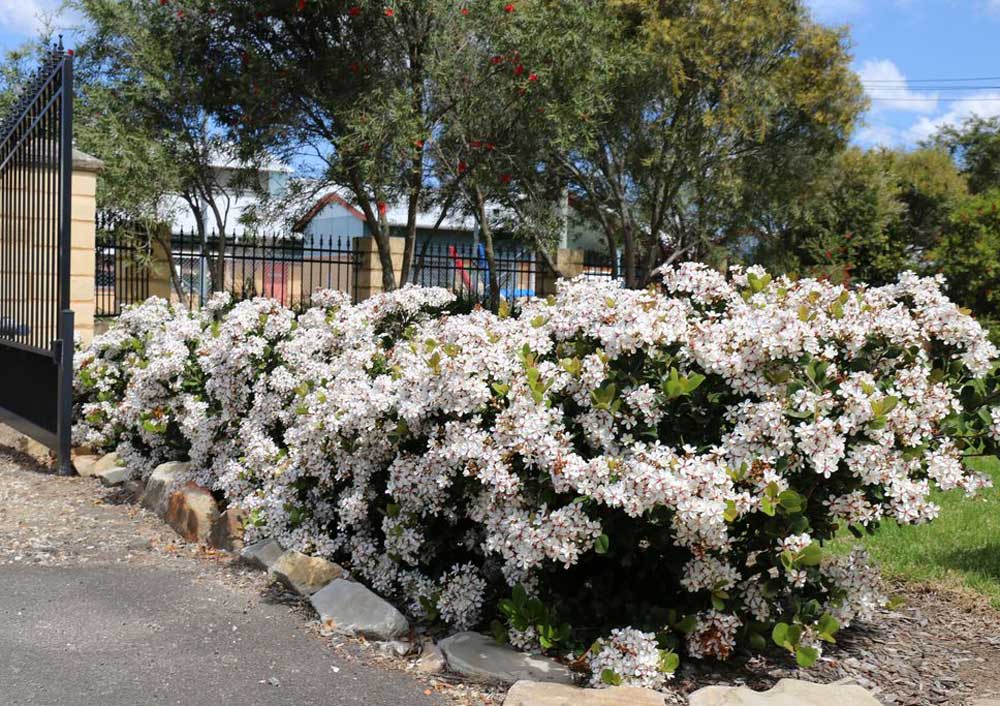
Plant Care and Maintenance
Plant Preferences
Non-native plants’ adaptability varies, with some adjusting well to local conditions and others struggling. Choose specimens that will thrive in your climate, soil type, garden position, maintenance budget, and irrigation schedule.
Fertilisation Requirements
While most native plants thrive regular fertilisers, members of the Proteaceae family may require low-phosphorus “native” fertilisers, particularly if they’re already established in poor soils. It’s a myth that all natives require a native fertiliser.
Hedge Pruning
Different plants have different growth speeds, which dictate their pruning requirements as a hedge. Generally it’s best to prune little and often, which may mean once a year or eight times a year, depending on the plant you’re growing and your preferences.
Fast-growing plants require more frequent pruning to maintain their shape, while slow-growing plants require less frequent pruning. Consider the mature heights of your plants before planting; will you be constantly battling with the genetic destiny of the plant, or are you simply guiding the shape of a correctly-sized plant with a gentle hand?
Prune with a set of clean garden shears, a mechanical hedge trimmer, or you can selectively prune branches with a pair of secateurs. Pruning to a fork will promote a natural look to the plant, while “shearing” the plant (non-selective pruning along each branch) will create a more manicured appearance.
Once plants are older with thicker internal branches and foliage mostly on the outer 5cm of the plant, it may be time to do a restorative prune to. This will allow more airflow and light into the middle of the plant and promote healthier growth.
Choose a few of the thickest branches and prune them back into the middle of the plant. Then choose a few medium branches to remove, and a few small branches. The idea isn’t to create massive gaps in your hedge, so less is more in this case.
Billy Goodnick from Crimes Against Horticulture calls this the “Papa Bear, Mama Bear, and Baby Bear” pruning technique.
A lot of people forget to feed their hedges and wonder why they aren’t growing their best after pruning. This is a gentle reminder to feed your plants with an organic fertiliser – preferably a few times per year but at least once per year before spring.
Even if they’re natives.
Roles Hedges Play in Landscape Design
Privacy, Amenity, and Biodiversity
A well-thought-out hedge can provide privacy, enhance aesthetic appeal, provide amenity benefits, and contribute to local biodiversity. There are different native and non-native plants which can offer all of these benefits.
For example, many callistemons have a tight branching habit which is perfect for screening. Their crushed leaves smell nice, they produce beautiful bottlebrush flowers in spring, which feed many of our generalist native pollinators such as overflies, cockatoos and bats.
Choosing the Right Hedge for Your Garden
Growth rate, maintenance requirements, climate compatibility, and so much more can depend on the particular plant you’re choosing. You’re not helping the pollinators by installing plants that don’t thrive in the position you’re trying them in, so take care when selecting a hedge to ensure it meets practical, aesthetic and ecological objectives.
Native vs Non-Native Plants: A Comparative Analysis
Growth and Maintenance
It’s said that native hedges require less maintenance, are better adapted to local pests, and have growth rates suited to their natural environment. And that non-native hedges might need more care to match these qualities.
This isn’t necessarily true. Some European plants are pretty fussy here in Australia, but superior breeding has led to some real winners. Meanwhile, there are plants from Southern Africa just as tough as anything that’s from Australia.
Some native hedges are slow-growing, like Better John and Green John Callistemon which may need a prune every year or two. Meanwhile, some native ficus and lilly pillies are faster-growing, some needing upwards of four cuts per year.
We need to look at each plant specifically, because the terms “native” and “non-native” aren’t really helpful.
Ecological Benefits
Endemic shrubby plants inherently support local biodiversity and wildlife within the natural ecosystem. However, they evolved within specific ecological communities that are hard to replicate except in a Natural Resource Management (NRM) setting.
Endemic plants sometimes aren’t adapted for the urban landscape where the conditions and ecosystem is totally different.
If it’s the choice between a struggling endemic plant vs a thriving native or exotic plant that can better support wildlife, I choose the healthy plant. If I can grow an endemic plant that looks great and flowers its head off, that’s even better.
Celebrating Diversity: Incorporating Both Native and Non-Native Hedges
Strategies for Mixed Plantings
The combination of different plants within a hedge isn’t to everybody’s taste, but doing so can look quite lovely and provide a wider variety of resources for wildlife. Multi species plantings work great for wind breaks, screening and some ornamental hedges. Just choose varieties that complement each other in colour, density, growth habit, size, etc.
Besides growing multiple species together in a single hedge, you can grow several individual-species hedges, which still increases the garden’s biodiversity.
Practical Advice for Gardeners and Landscape Professionals
Selection Tips
Choosing plants should be driven by the site’s conditions (climate, micro climate, soil, sun, etc.) and your garden goals (ground cover, biodiversity, “native garden,” etc.). Consider both native and non-native options, unless you’re specifically going for a “native garden.”
Check for healthy-looking shoots and roots. Feel free to plant tubestock if it means you can afford plant cultivars that will perform better. Tubestock plants grow surprisingly quick, and can often overtake those planted from larger pot sizes within a few years.
Climate and Micro Climate
Your local area has its own climate, whether that’s the sub-tropical climate of Brisbane, the temperate climate of Melbourne, or the Mediterranean climate of Perth.
On top of that, each section of your garden has a micro climate. Underneath the shady canopy of a couple of giant Moreton Bay figs, you could have a dark, moist micro climate. A couple of metres away, in the sunny section of the garden next to the rock retaining wall, the micro climate is hot, dry, with full sun and reflected light and heat coming from the rockery.
Plant Functions
A wise horticulturist told me to get at least five functions out of every plant. Perhaps you’d like to choose a plant that provides:
- Lush, beautiful green foliage
- Privacy and screening
- Pollinator support in spring (when insects are most active)
- Sensory olfactory elements (scent)
- Both drought and flood tolerant.
Not all plants can fit this bill. One cultivar that ticks all of these boxes would be the native Slim Callistemon.
Slim™Callistemon viminalis ‘CV01’ PBR.
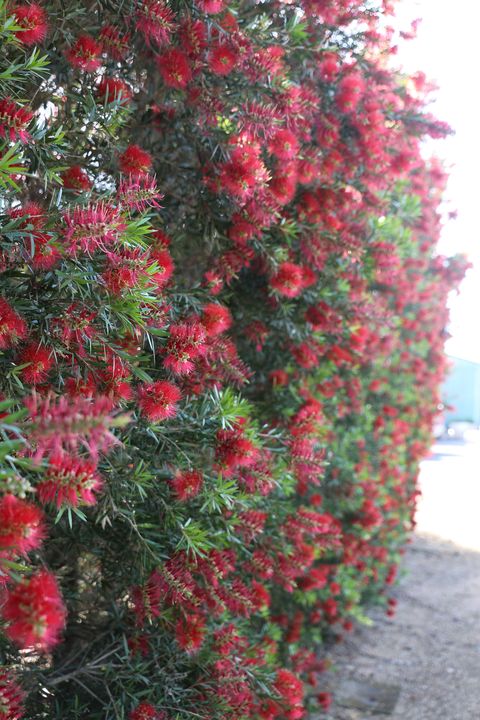
As well as considering the site conditions, also think about what you want to get out of each plant.
Conclusion
By valuing the unique contributions that each plant can bring, and understanding their own quirks and weaknesses, we can grow stronger and healthier gardens, which look more beautiful and are better able to support wildlife. The blanket terms “native” and “non-native” can’t help us from a practical point of view, but they can help us inform plant palettes from a creative and storytelling perspective.
If you’re dead set on using locally native plants, source some locally endemic seeds and have a go at growing some yourself. It could be an incredibly rewarding experience. Inform your plant choices by learning how they interact with the endemic fauna, and look for gaps in the ecosystem you can fill.
However, if your main focus is supporting a wide range of generalist native pollinators or simply to source a low-maintenance plant for a difficult garden position, it’s worth looking for plants Australia-wide and abroad.

